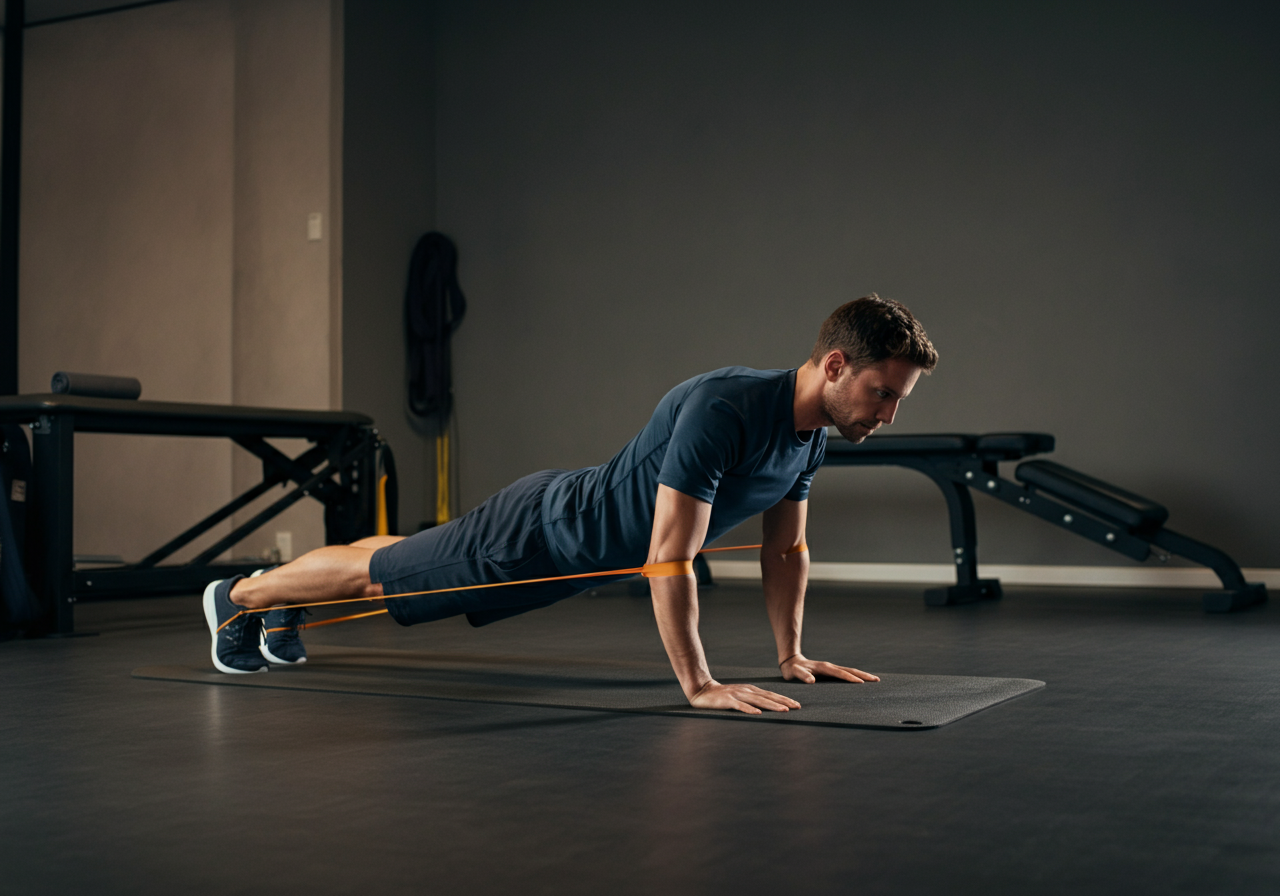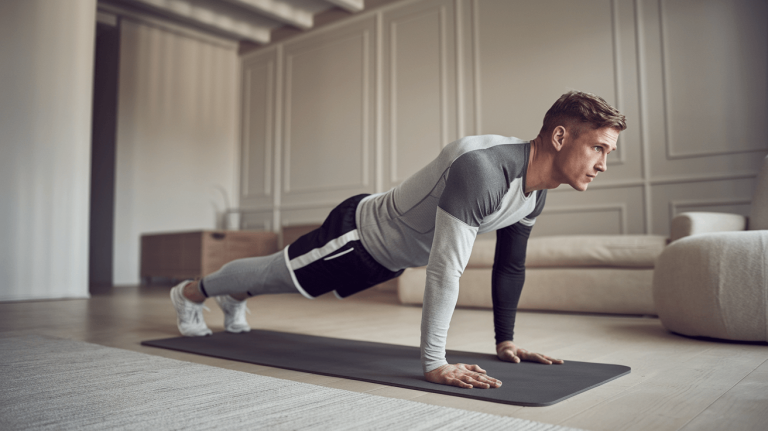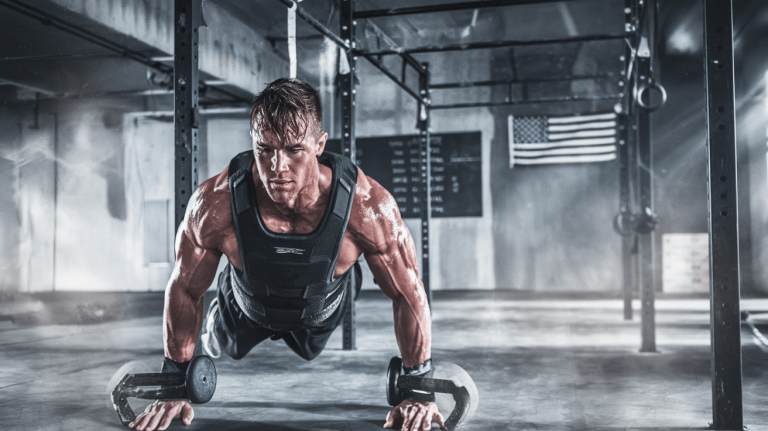The Definitive Guide to Adductor Training: From Bulletproofing Your Groin to Unlocking Athletic Power
Medically Reviewed By: Dr. Alaina Smith, DPT, CSCS, Certified Physical Therapist
Nagging groin pain holding you back from your next sprint? Or maybe you’re looking to build the foundational stability that separates good athletes from great ones. The secret might be in a group of muscles you’re neglecting: the adductors. Too often written off as the target of a single, awkward-looking gym machine, these inner thigh muscles are a linchpin for pelvic stability, multi-directional power, and robust injury prevention.
This guide presents a complete lifecycle approach to adductor training. We’ll move beyond generic exercises to provide a comprehensive blueprint covering everything from foundational anatomy and injury prevention to advanced performance protocols for athletes. Whether you’re recovering from a strain or aiming for a new personal best, the principles and groin strengthening exercises in this article will provide a clear path forward.
By the end of this article, you will have a complete toolkit to understand, strengthen, and protect your adductor muscles, helping you to prevent injuries and unlock new levels of power and agility.
Table of Contents
- The Core Foundation: Understanding Your Adductor Muscles
- The Bulletproof Protocol: How to Prevent Groin Strains & Fix Tight Adductors
- The Complete Adductor Exercise Library
- Performance Programming: Adductor Training for Athletes
- Conclusion
- FAQ: Answering Your Top Adductor Questions
The Core Foundation: Understanding Your Adductor Muscles
To train a muscle group effectively, you must first understand its structure and function. The adductors are far more than just “inner thigh” muscles; they are a complex system critical for stabilizing the lower body and generating force in nearly every athletic movement.
What Are the Adductor Muscles? (And Why They Matter)
The adductor group is a set of five muscles located on the medial (inner) side of your thigh that primarily function to pull the leg toward the body’s midline. According to detailed adductor muscles anatomy provided by medical institutions like the University of Arkansas for Medical Sciences (UAMS), this group includes:
- Adductor Magnus: The largest and most powerful of the group.
- Adductor Longus: The most frequently injured adductor muscle.
- Adductor Brevis: A shorter muscle that lies beneath the longus.
- Pectineus: Assists in both hip flexion and adduction.
- Gracilis: A long, thin muscle that crosses both the hip and knee joints.
(Anatomical diagram showing the location of the five adductor muscles on the inner thigh)
These muscles originate at the pelvis and insert along the femur (thigh bone). This anatomical arrangement is why they are essential not just for movement but also for pelvic stability. Effective groin strengthening exercises target this entire complex to ensure balanced development.
The Adductors’ Triple Role: Stability, Power, and Injury Prevention
The adductors are workhorses in human movement, performing three critical biomechanical functions.
- Pelvic Stability: During single-leg movements like running, lunging, or climbing stairs, the adductors work in concert with the hip abductors (outer thigh muscles) to keep the pelvis level. Poor adductor strength can lead to a pelvic drop, causing a cascade of issues up and down the kinetic chain. This is a core component of functional core stability.
- Rotational Power: The adductors are powerful hip extensors and rotators. They generate immense force in activities that require explosive “squeezing” of the legs, such as kicking a soccer ball, skating, or swinging a bat or golf club.
- Injury Prevention: Weak or unconditioned adductors are a primary risk factor for groin strains. Well-designed prevent groin strain exercises create eccentric strength—the ability to control a lengthening muscle—which is crucial for decelerating the leg during sprints and quick changes of direction, protecting the muscle from tears.
The Bulletproof Protocol: How to Prevent Groin Strains & Fix Tight Adductors
Chronic groin pain and tightness can sideline even the most dedicated athletes. The key to durability is a proactive approach that addresses mobility restrictions and strength imbalances before they become debilitating injuries.
The Root of the Problem: Why Adductor Injuries Happen
Adductor, or groin, strains typically occur for a few common reasons:
- Muscle Imbalances: The most frequent culprit is a strength imbalance where the hip abductors (outer hip) overpower the adductors. This imbalance places excessive strain on the adductors during lateral movements.
- Inadequate Warm-up: Cold, unprepared muscles are less pliable and more susceptible to tearing when subjected to the explosive demands of sport.
- Overuse and Fatigue: When muscles are fatigued, their ability to absorb force diminishes. Pushing through exhaustion significantly increases injury risk.
- Poor Eccentric Strength: Most groin strains happen when the muscle is lengthening under load, like when a soccer player’s leg is outstretched after a kick. A lack of eccentric strength makes the muscle unable to manage this braking force.
Targeted prevent groin strain exercises and mobility work, such as fix tight adductors exercises, are essential for mitigating these risks.
A Step-by-Step Rehabilitation Guide for Minor Strains
If you’ve suffered a mild to moderate adductor strain, a structured, criteria-based recovery is crucial to prevent re-injury. Rushing back to activity is the fastest way to turn an acute issue into a chronic one. Based on trusted clinical outlines, such as the groin injury rehabilitation protocol from Mass General Brigham Sports Medicine, a typical phased recovery looks like this:
- Phase 1: Acute (Days 1-5): Focus on rest, ice, and gentle pain-free movement. Begin with isometric exercises (squeezing a ball between the knees) where the muscle contracts without changing length.
- Phase 2: Sub-Acute (Week 1-3): Once pain-free isometrics are achieved, introduce gentle range of motion. Begin concentric strengthening with light-resistance adductor muscles rehabilitation exercises like side-lying adductions.
- Phase 3: Strengthening (Week 3-6+): Gradually increase the load and introduce eccentric exercises. The Copenhagen Plank is a key player here. Begin sport-specific movements at low intensity.
- Phase 4: Return to Sport: Progression to full activity is only permitted once you have full, pain-free strength and range of motion, and can successfully perform sport-specific drills (cutting, sprinting) without issue.
Mobility and Flexibility: Your First Line of Defense
Good mobility allows your muscles and joints to move through their full range of motion, reducing compensatory strain. A consistent routine of dynamic and static stretches is a powerful tool to fix tight adductors exercises and maintain hip health. Authoritative sources like the American Academy of Orthopaedic Surgeons (AAOS) recommend a mix of stretches as part of a comprehensive hip conditioning program.
- Dynamic Stretch (Pre-Workout): Leg Swings. Standing sideways to a wall for support, swing one leg forward and backward 10-15 times. Then, turn to face the wall and swing the leg side-to-side (abduction/adduction) 10-15 times.
- Static Stretch (Post-Workout): Butterfly Stretch. Sit on the floor with the soles of your feet together, letting your knees fall out to the sides. Gently press your knees toward the floor to deepen the stretch. Hold for 30-45 seconds.
- Static Stretch (Post-Workout): Frog Stretch. Start on your hands and knees. Widen your knees as far as is comfortable, keeping your ankles in line with your knees. Rock your hips back toward your heels until you feel a deep stretch in your inner thighs. Hold for 30-45 seconds.
This focus on adductor stretching for flexibility is a non-negotiable part of bulletproofing your groin.
The Complete Adductor Exercise Library
E-E-A-T Note: Each exercise below should be accompanied by original, high-quality photos and video demonstrations showing perfect form and common mistakes to ensure user safety and efficacy.
Building resilient adductors requires a well-rounded library of exercises. Here is a definitive list categorized by equipment, making it easy to build strength whether you’re at home or in a fully equipped gym.
At-Home Strength: Bodyweight Adductor Exercises
You don’t need any equipment to start building a strong foundation. These bodyweight adductor exercises are perfect for beginners or as part of a dynamic warm-up.
- Standing Adduction: Stand tall and shift your weight onto your left leg. Keeping your right leg straight, lift it slightly off the floor and sweep it across the front of your body. Squeeze your inner thigh at the peak of the movement. Return to the start and repeat for 12-15 reps before switching legs.
- Side-Lying Adduction: Lie on your side with your legs straight. Bend your top leg and place your foot flat on the floor in front of your bottom leg’s knee. Keeping your bottom leg straight, lift it off the floor as high as you can, focusing on squeezing the inner thigh. Lower with control. Perform 15-20 reps per side.
- Cossack Squat: Start with a wide stance. Shift your weight to your right side, bending your right knee and squatting down while keeping your left leg straight with the toes pointing up. Go as low as your mobility allows, feeling a stretch in your straight leg’s adductor and a contraction in your bent leg’s adductor. Push back to the start and alternate sides for 8-12 reps per side. This is a great way to learn how to strengthen adductors at home.
The Gold Standard: The Copenhagen Plank
If there is a single king of adductor exercises, it is the Copenhagen plank. This exercise is prized for building incredible eccentric and isometric strength, making it one of the most effective prevent groin strain exercises available.
- How to Perform: Lie on your side with your forearm on the ground under your shoulder. Place your top leg on a bench or box and your bottom leg underneath it. Lift your hips off the ground, supporting your weight on your forearm and the inside edge of your top foot. Hold this position.
- Variations:
- Beginner (Short Lever): Bend your top leg and rest your knee on the beach instead of your foot.
- Intermediate (Dynamic Reps): From the top position, lower your hips to tap the ground and immediately raise them back up.
- Advanced (Weighted): Hold a dumbbell or weight plate at your hip.
Integrating the Copenhagen Plank into your routine is a direct investment in lower body resilience and one of the best bodyweight exercises you can do for athletic performance.
Banded Resistance: Unlocking Progressive Overload
Resistance bands offer a simple and effective way to add load and continue making progress at home.
- Banded Standing Adduction: Anchor a loop resistance band to a stable point near the floor. Step inside the loop with your inside leg. Step away from the anchor to create tension. Pull your leg inward across your body against the band’s resistance. Perform 15-20 reps. This is an excellent way how to strengthen adductors at home with added challenge.
- Banded Clamshell (Adductor Variation): This reverses the traditional clamshell. Lie on your side and loop a band around both thighs, just above the knees. Anchor the foot of your top leg against a wall or heavy object. Press your bottom knee upwards against the band’s resistance, keeping your feet together.
Gym & Free Weights: Building Maximum Strength
For those with access to a gym, these exercises allow for heavy loading to build maximal adductor strength and hypertrophy.
- Cable Hip Adduction: Attach an ankle cuff to a low cable pulley. Stand sideways to the machine with the cuff on your inside leg. Just like the banded version, pull your leg across your body’s midline against the weight stack’s resistance.
- Barbell Cossack Squat: Perform the Cossack Squat as described above while holding a barbell in a front rack or back rack position for a significant increase in load and stability demand.
- Seated Adduction Machine: While often misused, this machine can be a valuable tool for isolating the adductors. Focus on a controlled tempo, pausing at the peak contraction and slowly resisting the weight on the way back out. These are foundational groin strengthening exercises in many commercial gyms.
Performance Programming: Adductor Training for Athletes
Strong adductors don’t just prevent injury; they directly enhance athletic performance. Integrating specific adductor work into your training can translate to more power, speed, and agility.
For Soccer Players: Powering Kicks and Quick Cuts
Soccer involves constant changes of direction, cutting, and powerful striking—all movements that heavily rely on the adductors. A groin injury is one of the most common ailments in the sport for a reason. Strong adductors contribute directly to instep kicking power and provide the eccentric strength needed to decelerate and cut safely.
Sample Integration: Add 2-3 sets of Copenhagen Planks and Cable Hip Adductions to your lower body strength training days, twice a week. Prioritize Cossack Squats in your warm-ups. These adductor exercises for soccer players will build both the strength and mobility needed on the pitch.
For Runners: Enhancing Stability and Preventing Injury
For runners, adductor strength is all about pelvic stability. Each foot strike is a single-leg impact. Weak adductors can allow the opposite hip to drop, leading to compensatory strain on the IT band, lower back, and knees. Stable hips mean a more efficient stride and a lower risk of common overuse injuries.
Sample Integration: Incorporate Side-Lying Adductions and Banded Standing Adductions into your pre-run activation routine (2 sets of 15-20 reps). Add one heavier prevent groin strain exercises like the Copenhagen Plank into your weekly strength work. This simple addition can significantly improve your running mechanics and is a core principle of comprehensive running injury prevention. These specific adductor exercises for runners focus on endurance and stability over maximal power.
Conclusion
We’ve covered the complete adductor lifecycle: understanding the anatomy is the foundation, prioritizing mobility and injury prevention is the key to longevity, and using a complete exercise library is the tool for building elite strength. This holistic approach is far superior to performing a few random exercises without purpose.
A strong, stable, and mobile hip complex, powered by well-conditioned adductors, is non-negotiable for anyone serious about athletic durability and peak performance. By treating adductor training not as an afterthought but as a core component of your program, you build a body that is more powerful, agile, and resilient against injury.
Start bulletproofing your body today. Pick one exercise from our At-Home Library and add it to your routine this week.
FAQ: Answering Your Top Adductor Questions
How do you fix tight adductors?
You can fix tight adductors through a combination of consistent stretching and foam rolling. Focus on static stretches like the Butterfly Stretch and Frog Stretch post-workout, holding each for 30-45 seconds. Additionally, strengthening the muscles through their full range of motion with exercises like Cossack Squats can improve mobility over time.
What is the best exercise to prevent groin strains?
The Copenhagen Plank is widely considered the single best exercise for preventing groin strains. It builds exceptional eccentric and isometric strength, which is critical for absorbing the forces that typically cause adductor muscle tears during sports.
Can I strengthen my adductors at home?
Absolutely. You can effectively strengthen your adductors at home with no equipment. Exercises like Side-Lying Adductions, Cossack Squats, and Standing Adductions are excellent starting points. Adding a resistance band can provide progressive overload for continued gains.
How often should I train my adductors?
For most people, training adductors 2-3 times per week is ideal. One day can be focused on heavier, strength-based movements (like Cable Adductions or Weighted Cossack Squats), while another session can focus on stability and endurance exercises (like Copenhagen Planks or high-rep banded work). Always allow at least 48 hours between intense sessions for recovery.





